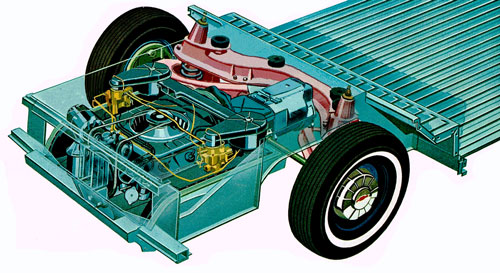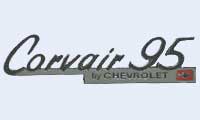What makes the Corvair Turbo-air six engine so distinctive? The Turbo-air six (also called the 145-six or just the flat-six) is a six-cylinder, rear-mounted, forced-air cooled powerplant, a design never before or since put into production by a major US auto manufacucturer. Comparable engines are few: Preston Tucker had a flat-six in the rear of his ill-fated 1948 sedan, and the rear-engined Volkswagon and mid-engined Citroen DS were both powered with an air-cooled flat-four. Porche showed in the 911 that a tail-end, air-cooled flat-six could be a success (35 years!) for a high-end market. But in the US, for an economy vehicle and most definitely a forward-control van and pickup, rear engines and air-cooling were history.
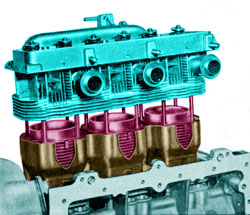
In the turbo-air six, two banks of three horizontally-opposed cylinders are mounted on the crankase, with a cylinder head fitted with a single-barrel Rochester carburetor servicing each bank. Despite the name, the standard Turbo-air six was not turbocharged; the first turbocharged engine was introduced in 1962 for the Monza Spyder. While borrowing some fundamentals from Volkswagon and Porche, GM's engineers pushed rear-engine design in new directions to maximize power, minimize engine weight, and resolve (for the most part) cooling, fan belt, carburetion, and oil leak problems.
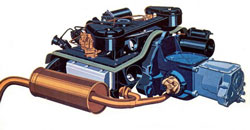
Air-cooling yields inherent weight savings (no radiator, water jackets, etc), and Turbo-air six engineers achieved additional weight reduction by casting in aluminum the crankcase, cylinder heads (which had an integrated intake manifold and cooling fins), rear engine housing, clutch housing and crankcase cover. But air affords less cooling than water, and while ambient air-cooling was sufficient for the Volkswagan flat-four, this wouldn't work for the Turbo-air six which had 55 additional HP in the first generation engines. The additional cooling was provided by a centrifugal blower mounted above the crankcase capable of pushing 1850 cfm air @ 4000 rpm. The fan is driven by the engine's single belt which turns 90o across the generator and tensioner pulley as it travels from the crankshaft pulley. The tendency of the belt to disembatk from the fan in early models was largely eliminated with a magnesium fan introduced in mid-1960 (nevertheless, experienced Corvair owners carry a spare).
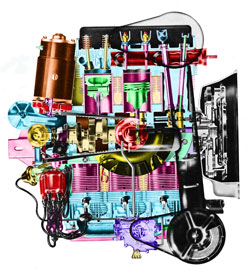
Effective engine cooling also demands adequate lubrication, and the Turbo-air six "is designated for full lubrication of all moving parts, with full pressure delivered from the main oil galleries to crankshaft and camshaft bearings, and from crankshaft main bearings to connecting rod bearings. Overspray from connecting rod bearings lubricates cylinder walls and pistons. The hydraulic lifters draw oil from the main oil galleries, and hollow push rods conduct oil to the rocker arms and valves in the heads. The timing gears are lubricated by over-spray from the main bearing and the front camshaft bearing. The fuel pump eccentric and distributer drive gear receive oil through a nozzle in the engine rear housing."(1962 specifications manual)
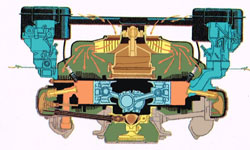
Even with forced air, the cooling capacity of the Turbo-air six contributed to some well documented engine problems, and ultimately limited performance enhancement. The most thoroughly documented problem was oil leakage at the lower pushrod tube o-rings, a problem evenutally remedied with use of viton.
The powertrains of Corvair-95s were enhanced to better handle their loads. The engines received higher grade connecting rod bearings and exhaust valves, valve rotators, lower compression and larger jets for a richer fuel mixture from the carburetors. FC vehicles also received a larger 9 1/8 inch diameter clutch. Finally, to allow servicing of the engine through the rear access door, the oil filler tube in an FC engine is relocated to the right of the distributor and angled to the rear.

